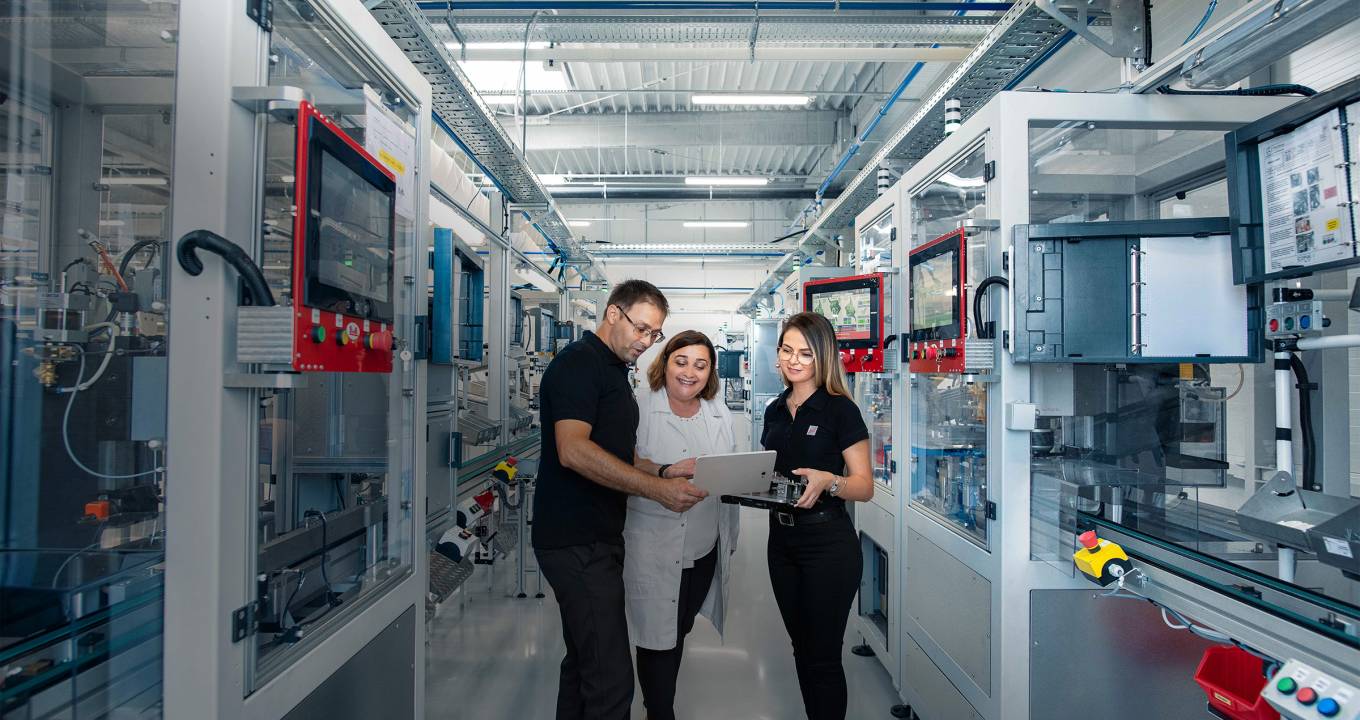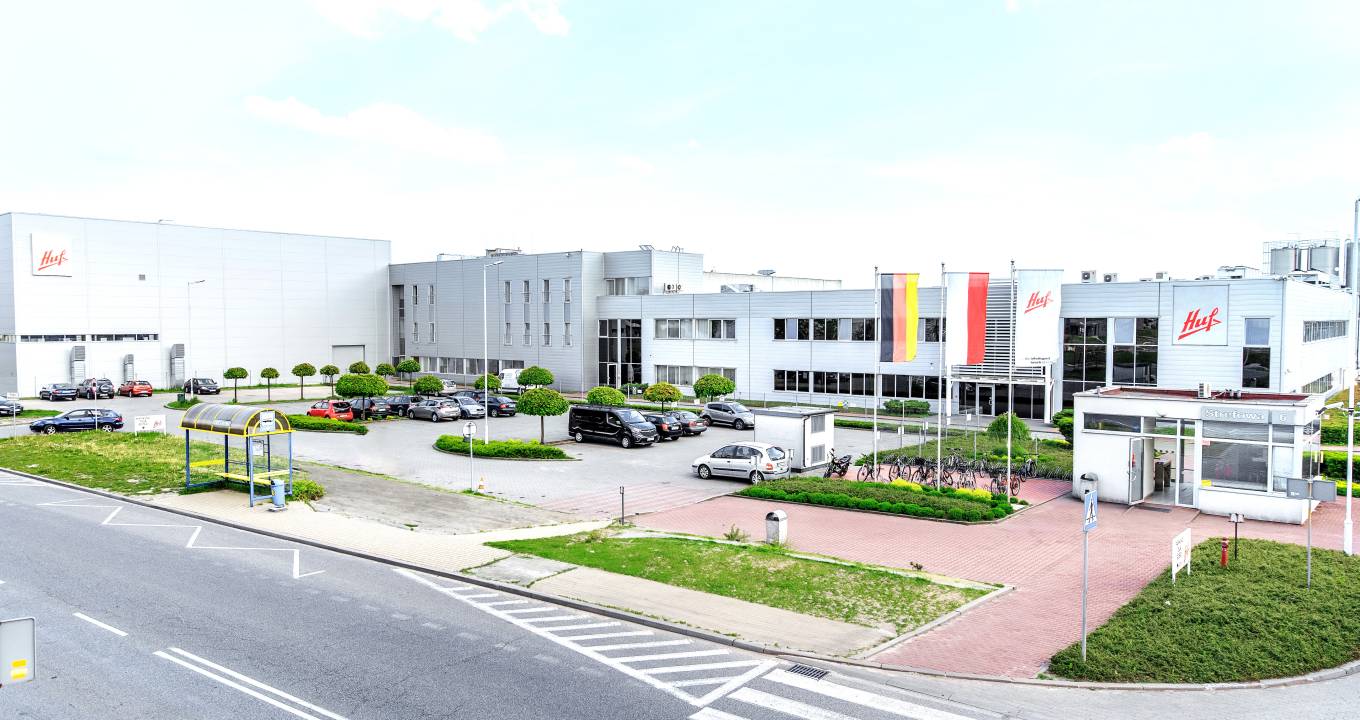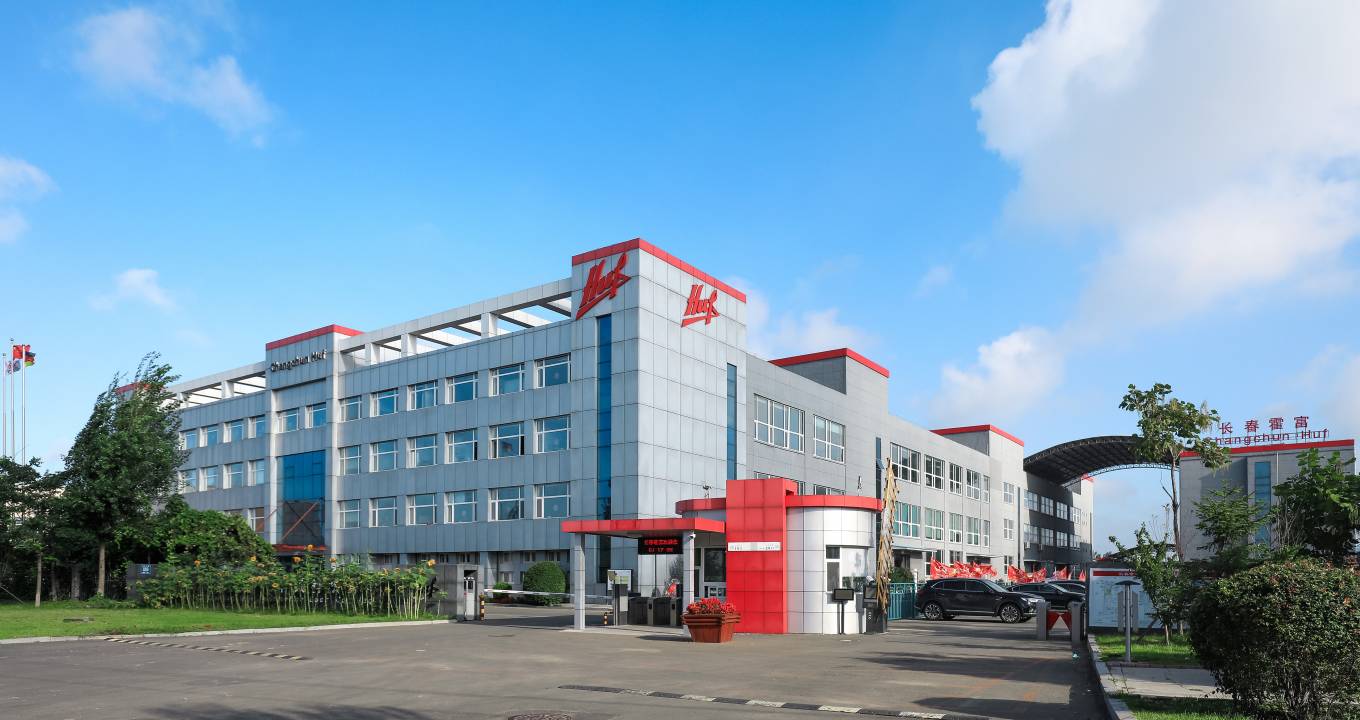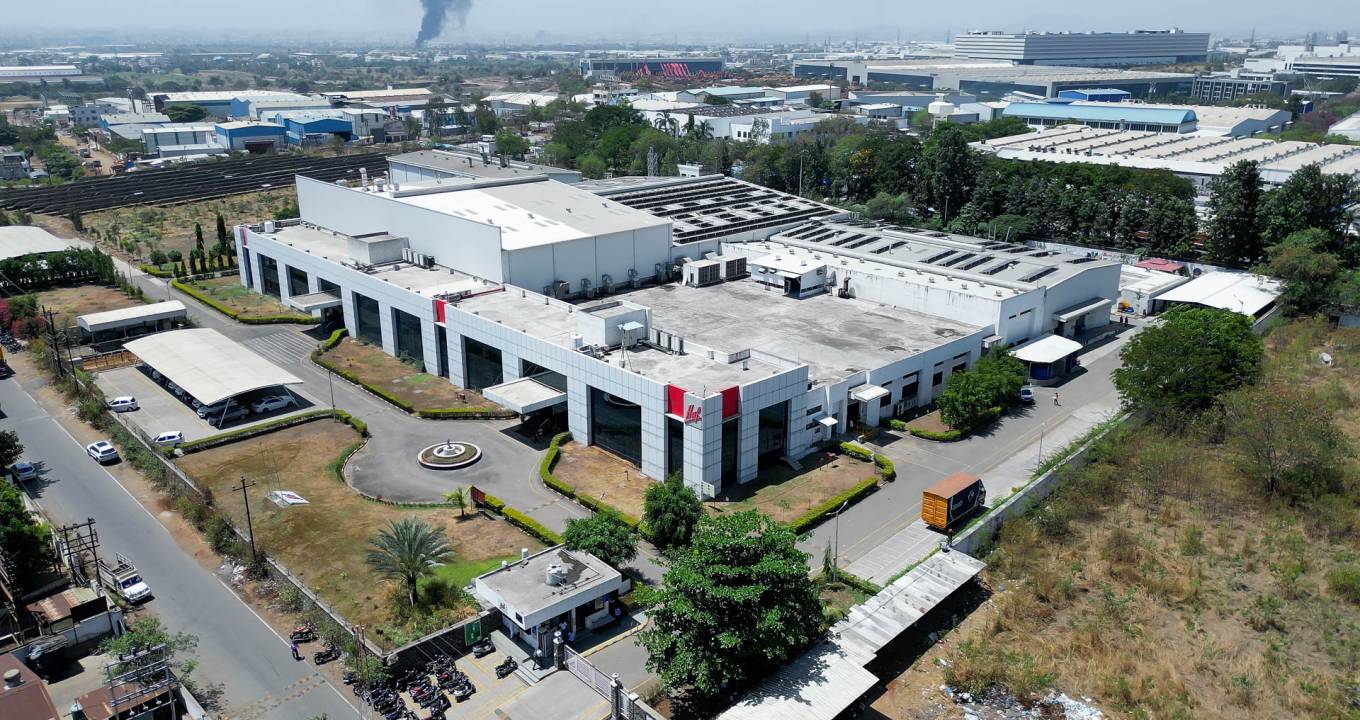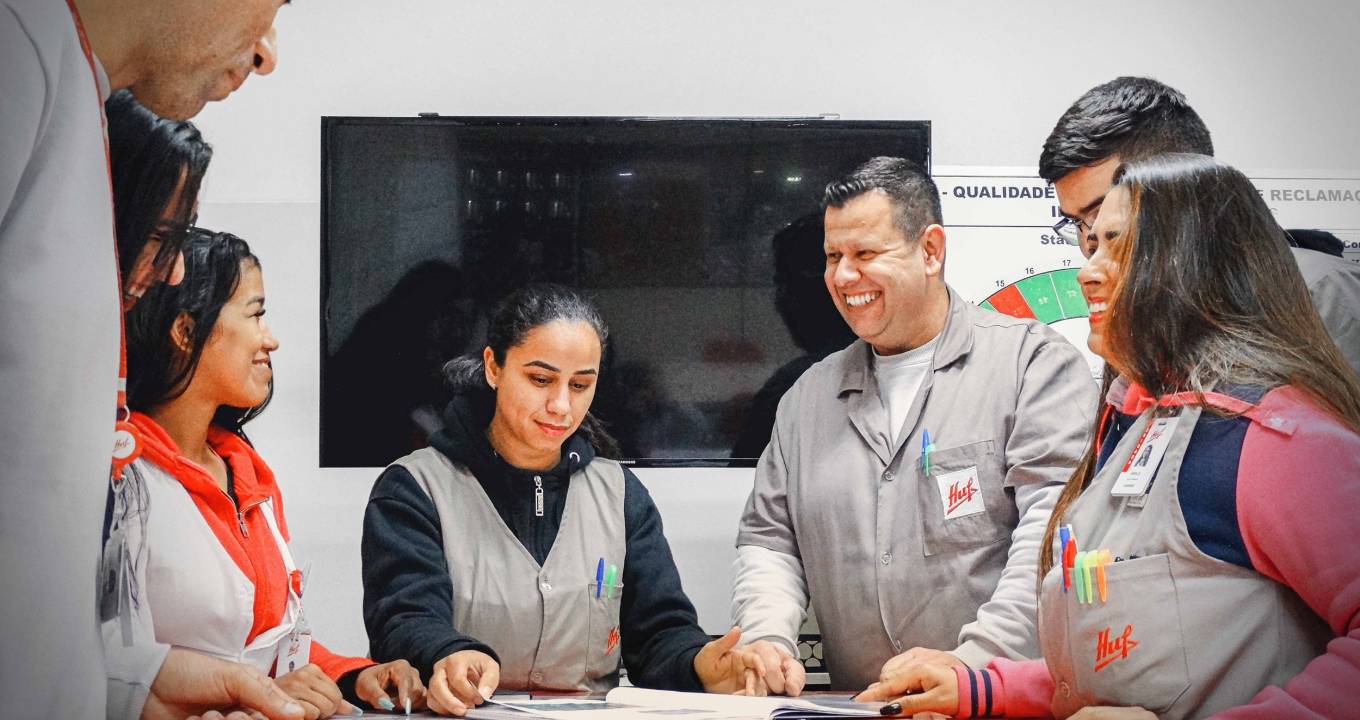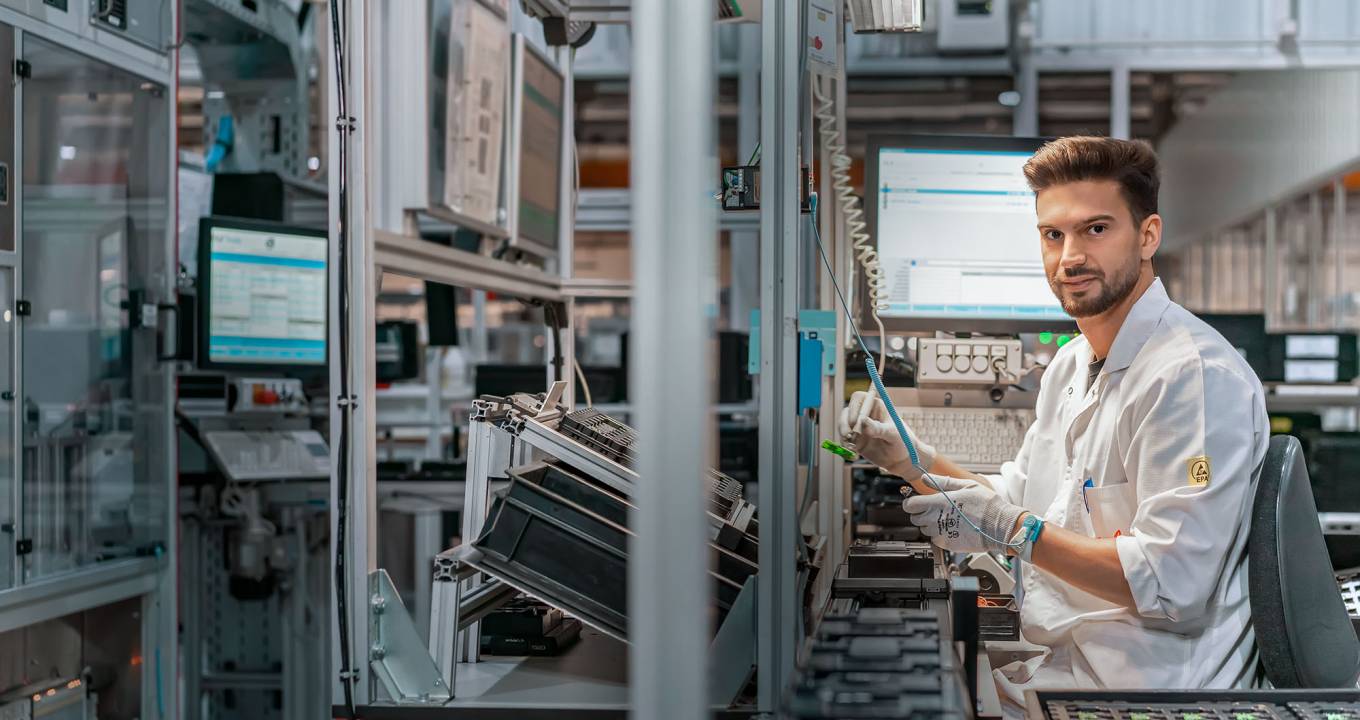The reason for the workshop in Portugal is to set up new production lines for newly acquired customer projects. The target: a further optimization of the production layout and manufacturing processes as well as material flow. The HPS team led by Dr. Michael Koziol therefore started with a precise analysis of the current situation. This involved applying various lean methods, such as the spaghetti diagram for visualizing work processes and material flows. It is used to depict the current status and to identify possible “types of waste” such as unnecessary transport routes or excessive movement sequences.
Cross-process optimization: HPS team focuses firmly on the holistic approach
“The current layout works very well for the existing tasks. However, the upcoming expansion of the portfolio of Huf Portuguesa entails necessary changes in some areas and offers us potential to optimize the overall process. Shortening the distances and waiting times between the individual production stations quickly emerged as the main goal,” explained Dr. Michael Koziol.
During the workshop, the lean experts focused on cross-process optimization. “For us, the holistic approach is important. This means that the goal is not to gradually optimize individual processes such as injection molding or production stations in the assembly department at the plant. Instead, we always keep an eye on the big picture, how the individual processes interact as a whole,” describes Dr. Koziol. “To put it simply, we coordinate the individual optimization processes so precisely that each individual wheel in the production process functions perfectly - and that all the wheels mesh together seamlessly.”
Even leaner production: Moving into the fast lane with HPS
Based on their analysis of the current processes in Tondela, the HPS experts designed numerous process optimizations and, above all, a target vision for an even “leaner” production. In the next step, they checked directly on site how the new processes could be implemented in the plant. “Many of our findings could immediately be put into practice. Others we will incorporate into series production in the medium term. And of course, this newly acquired know-how will also benefit other Huf locations in the future,” explains Dr. Michael Koziol. This is because the experience gained during the workshop will flow directly into the HPS. From this, further knowledge will be derived for standardization and optimization in other plants.
Background: When applied to motor racing, the Huf Production System would be the team management. If, in the search for the last millisecond in the battle for the fastest time, a new tire compound is tested on one of the team's race cars, for example, and this proves to improve the lap times, it must be ensured that this tire compound also works in exactly the same way on the other identical race cars and optimizes their lap times, too. At the end of the day, however, it's the overall package that counts: Not only the tire compound, but also the engine, chassis, the entire vehicle and the driver must be ideally matched.


